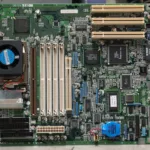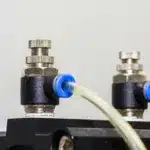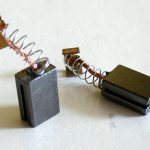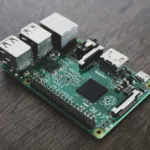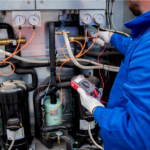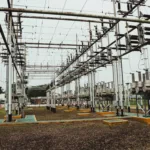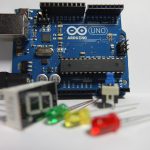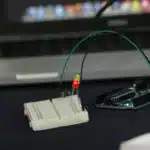
Introduction
Industrial control panels are of significant importance in multiple industries for efficient management and operation of complex machinery and processes. With escalating demand for space-efficient solutions, designing industrial control panels with optimised spatial utilisation has become increasingly paramount. This article guides users on key considerations and strategies for designing control panels that maximise space efficiency without compromising functionality or safety.
Understanding Industrial Space-efficient Control Panel: The Importance
An industrial space-efficient control panel is a specialised system in industrial settings to manage and regulate various processes and equipment within a confined space. It is designed to optimise the allocation of limited physical room. Industrial control panels typically integrate a combination of hardware and electrical components such as switches, buttons, indicators, meters, circuit breakers, sensors, and electronic devices, protecting components against harsh environmental conditions.
The importance of bespoke control panels lies in enhancing operational efficiency and safety within industrial environments where space is a premium resource. In manufacturing, automation, energy, and process control, where numerous machines and processes need consistent supervision and management, optimising available space is crucial. Efficient control panels enable operators to access and control various functions without clutter or confusion, reducing human errors and accidents. By effectively utilising limited space, these control panels contribute to streamlined operations, faster decision-making, and improved overall productivity.
Designing Industrial Control Panels for Space Efficiency
Designing space-efficient industrial control panels requires crucial steps and tips to help design space-efficient control panels, including:
- Preliminary Planning
Before designing a control panel, it’s crucial to establish a comprehensive plan. Identify the control panel’s objectives, the housing components, and the space limitations of the intended installation environment. Collaborate with engineers, designers, and end-users to ensure all requirements are understood and integrated into the design process.
- Component Selection
Selecting the right components is a foundational step in space-efficient control panel design. Opt for compact and multifunctional components–performing multiple tasks within a limited footprint. Consider using modular components stacked or arranged efficiently, reducing the overall panel size.
- Layout Optimisation
Efficient layout design is at the core of space-efficient control panels. Arrange components logically to minimise wire lengths, cable clutter, and unnecessary gaps. Group related components like power distribution modules, controllers, and interface devices. Use design software to create two-dimensional (2D) and 3D layouts to visualise and fine-tune the arrangement before production.
- Compact Wiring and Cable Management
The type of wiring and cable management are essential for space efficiency. Utilise wire ducts such as F1X3LG6N, cable trays, and clips to neatly organise and route cables, preventing tangling and minimising signal interference. Implement colour-coding and labelling for easy identification and maintenance.
- Integration of PLCs and HMIs
Programmable Logic Controllers (PLCs) and Human-Machine Interfaces (HMIs) are key components in control panels. Opt for PLCs with integrated I/O modules to reduce the need for external devices. Consider touchscreen HMIs that combine multiple functions into a single unit, eliminating the need for separate interfaces and displays.
- Utilisation of Variable Frequency Drives–VFDs
Integrating VFDs can significantly reduce the panel’s size and complexity and is essential for controlling motor speed and energy consumption. Choose compact VFDs that can control multiple motors and offer advanced communication options.
- Remote I/O Systems
Incorporate remote I/O systems to decentralise control and minimise components within the main panel. These systems allow placing I/O modules closer to sensors and actuators, reducing cable lengths and simplifying the panel’s layout.
- Efficient Cooling and Ventilation
Proper cooling ensures the longevity and reliable performance of control panel components. Opt for compact cooling solutions such as fans and heat sinks that efficiently dissipate heat without occupying excessive space. Consider using filtered ventilation to maintain a controlled environment inside the panel.
- Standardisation and Customisation
Balanced standardisation and customisation streamline production and maintenance processes. However, it allows for customisation options to accommodate specific requirements of different projects.
- Future Scalability
Design control panels with scalability to accommodate potential future expansions or upgrades. Leave room for additional components or modules without redesigning the entire panel. Consider integrating communication protocols–facilitating easy integration of new devices.
- Safety and Compliance
Space efficiency should never compromise safety or regulatory compliance. Make sure the control panel design adheres to industry standards and safety guidelines. Implement proper grounding, insulation, and shielding to prevent electrical hazards and interference.
- Testing and Simulation
Before finalising the design, perform testing and simulation to validate the functionality and performance of the control panel. Simulations help identify potential issues and optimise components’ arrangement for maximum efficiency.
Bottom Lines
Designing space-efficient industrial control panels requires a holistic approach integrating component selection, layout optimisation, wiring management, and adherence to safety standards. By considering the various bespoke strategies, engineers and designers can create control panels to conserve valuable space and enhance functionality, reliability, and ease of maintenance. As industries continue to evolve, prioritising space efficiency in control panel design will be pivotal in shaping the future of automation and industrial processes.






